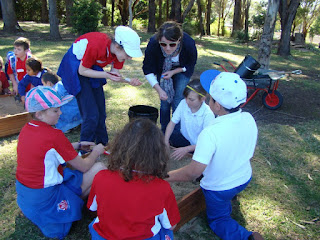Due to the need for a police presence in Shellharbour Village, a site in Mary Street was approved in 1859 for a temporary watch house that was completed in 1861.
A public meeting sought the construction of a basalt building to replace the temporary watch house and in 1877 the new Courthouse and lock-up was built.
The court eventually moved to Albion Park in 1908 and the Mary Street building was purchased by Mr E Thomas in 1938 and converted into a private residence.
The home was later sold to the Miller Family who named it 'Woodbine' after their former property 'Woodbine Farm' at Croome.
 |
| Woodbine c.2000, former Courthouse and Lock-up, Shellharbour Village Shellharbour Images, Shellharbour City Libraries |
 |
| Outhouse, former Courthouse and Lock-up, Shellharbour Village Shellharbour Images, Shellharbour City Libraries |
 |
| Woodbine, former Courthouse and Lock-up, Shellharbour Village Shellharbour Images, Shellharbour City Libraries |




































